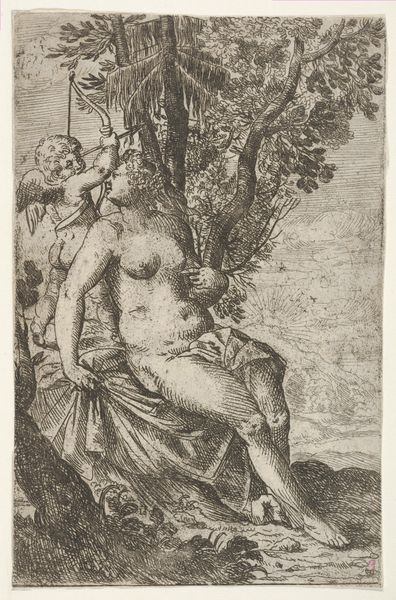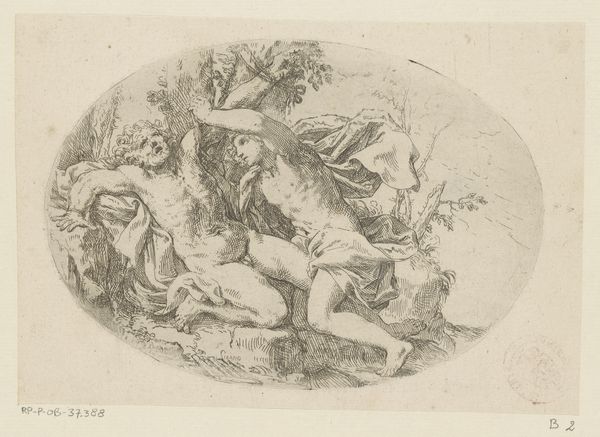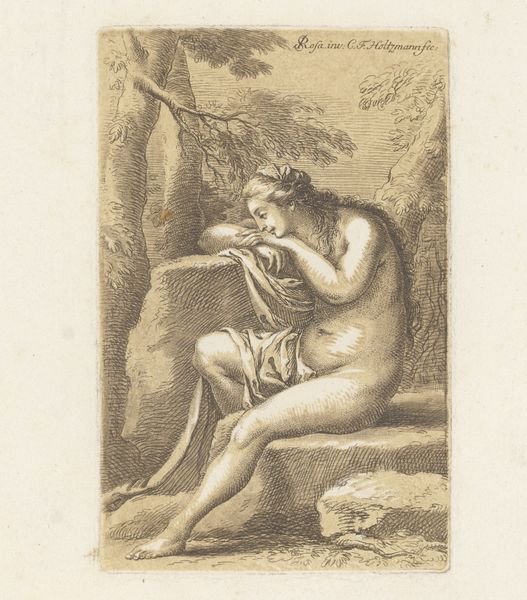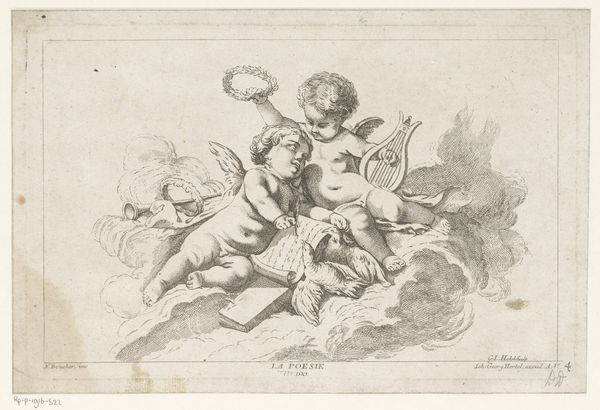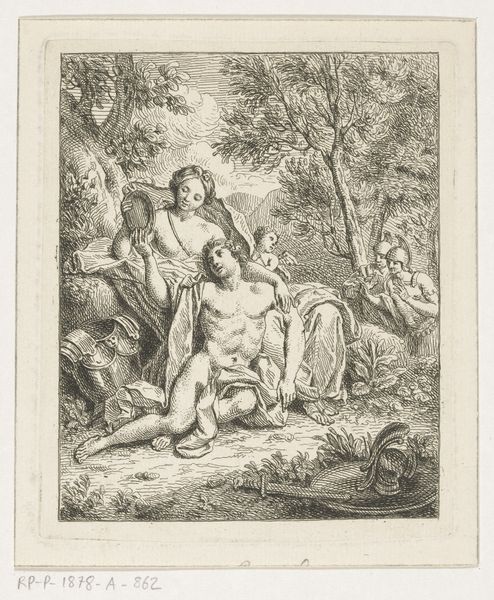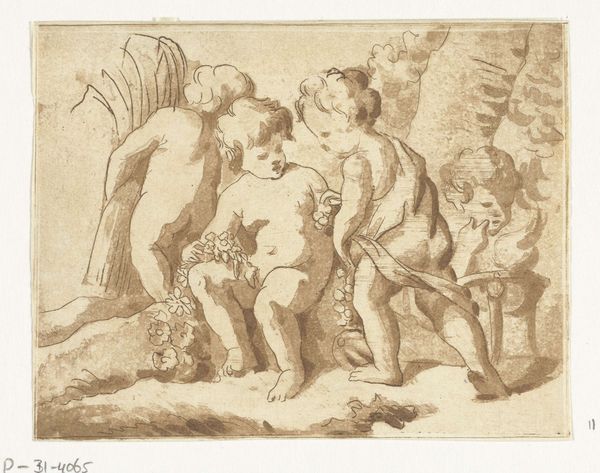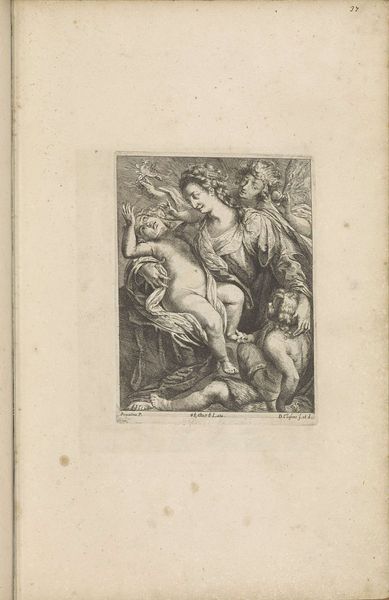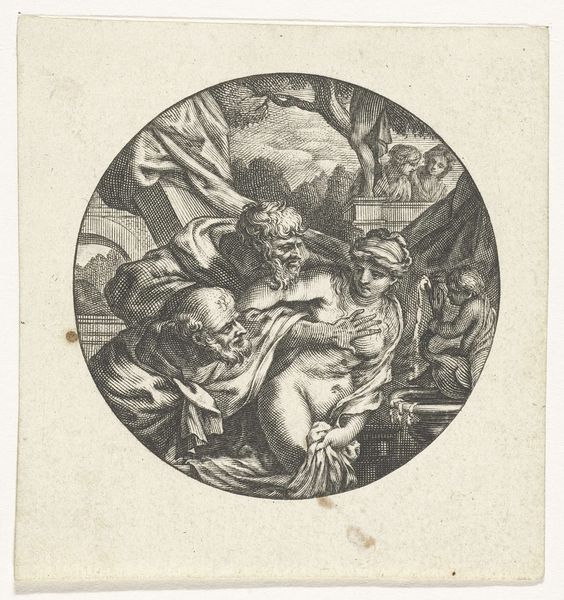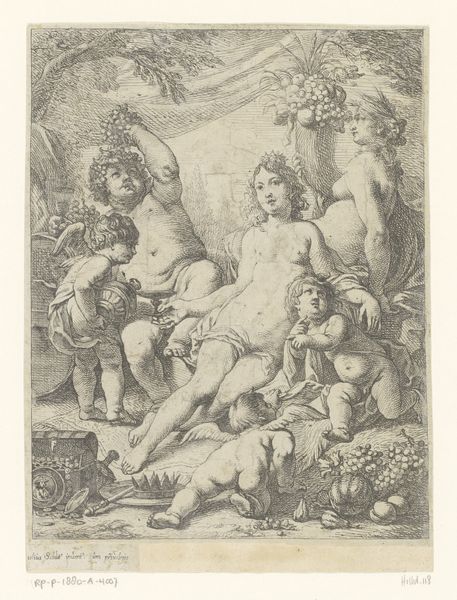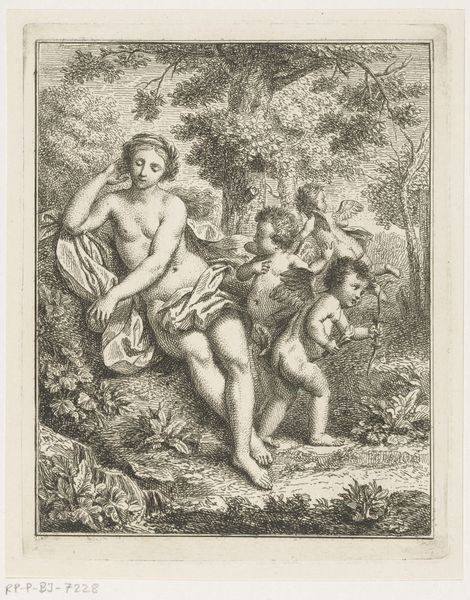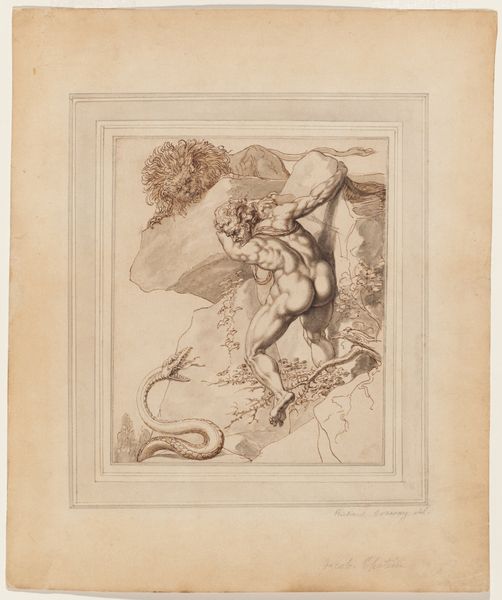
Dimensions: sheet: 4 11/16 x 3 7/8 in. (11.9 x 9.8 cm) image: 3 1/4 x 2 9/16 in. (8.2 x 6.5 cm)
Copyright: Public Domain
Editor: This is "Bacchante et jeune satyre" by Jean-Honoré Fragonard, made sometime between 1745 and 1806. It's an etching – the lines are so delicate. I find it quite playful, almost frivolous. What’s your take? Curator: I'm immediately drawn to the process of etching itself. Think about the copper plate, the acid bath, the labor involved in producing multiple prints. This wasn't some unique, precious object, but a repeatable image, designed for circulation. Consider its consumption: who was buying these prints, and how did the mass production affect the value of the art depicted? Editor: That's a good point. It’s so different from how we see art today. Did the printing process influence the style itself, the sort of loose, sketch-like quality? Curator: Absolutely! The lines mimic the freedom of drawing, but controlled by the demands of the etching process. And look at the subject: a bacchante and satyr, celebrating excess and abandon. By reproducing this scene, Fragonard is almost democratizing this sensual experience, bringing the elite pleasures of the aristocracy to a wider audience. The very *stuff* of the artwork--the ink, paper, the means of creating it—tells its own story, doesn't it? Editor: That’s fascinating, I hadn’t thought about it that way before – that the *process* and *materials* are part of the message. So, it's not just *what* is depicted, but *how* it's made and distributed that gives it meaning. Curator: Exactly. And by thinking about the materials, we get a handle on production, dissemination and the work's changing social function. Editor: I’ll definitely keep that in mind when looking at prints. Thanks so much. Curator: My pleasure. Considering materiality opens up fresh paths toward thinking about this period.
Comments
No comments
Be the first to comment and join the conversation on the ultimate creative platform.

